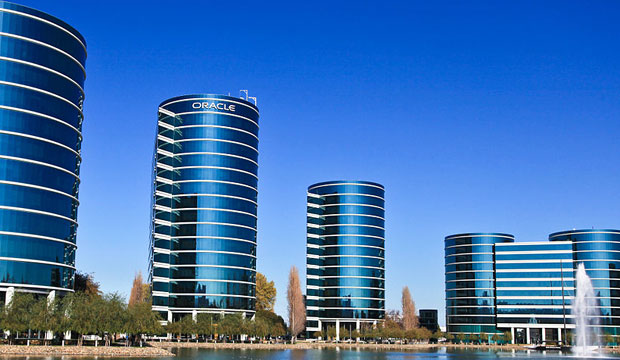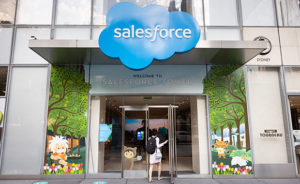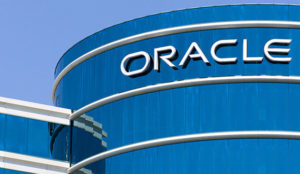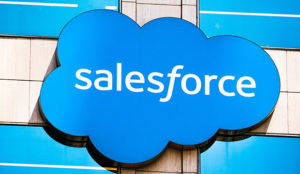For all of the dazzle of its rapidly evolving software portfolio, which includes a self-monitoring and self-patching database that also configures itself, as well as numerous cloud applications, Oracle has begun showing its credibility as a hardware vendor.
Hardware has commoditized and will not return to the prominence it had in the early days of the tech era. However, commoditization brings new opportunities simply because price-performance numbers work better. Under Oracle’s tutelage, hardware has found a disciplined and important niche supporting software’s expanding demands.
All of this started well before Oracle became involved in hardware with its purchase of Sun Microsystems. In the very earliest days of computing, the central computer did everything including controlling peripherals, which took up a lot of expensive cycles.
Then slowly the box housing the CPU became crowded with processor and memory-based controllers for everything from disk drives to displays. In the process, computing got faster and more versatile, in part because the CPU was doing less and could stick to its knitting.
Risk Reduction
What Oracle introduced at OpenWorld 2018 is in some ways akin to installing a controller or a graphics engine, but this time the added processing power is outside the box in multiple racks. Just as with those earlier refinements, new requirements have been driving new approaches to IT. In this case, it’s all about security.
One of the problems that keeps system architects up at night is maintaining the security of what’s going on in memory. Memory operations are the easiest place to disrupt a system’s operations because it’s only in memory that data is active and changeable. In conventional storage it just sits there. So meeting the security challenges in the market today requires insulating customer data in memory from the outside world.
Oracle has developed a two-tier strategy in its Oracle Cloud Infrastructure of having one computer — or set of them — interfacing with the Internet, and another set running customer data. In OCI, the IT perimeter is patrolled by bare metal servers that separate the Internet from operational computers holding and performing operations on customer data. Outsiders can’t access customer data to corrupt it.
This ensures that customer data never is exposed on the machine that faces a hostile world. Other aspects of Oracle’s autonomous database and its security functions more easily can patrol the control environment as well as the processing environment, while reducing exposure to a variety of risks.
New Form of Enterprise Computing?
Oracle introduced the Gen2 Cloud with these features and the name should be taken seriously; it’s not simply marketing hype. Now the real question becomes whether or how fast the industry will adopt this strategy.
On the plus side, OCI is an oasis in a time of drought, but on the minus side it comes from a vendor that makes no bones about wanting to integrate solutions vertically, thus locking out competition. How comfortable do you feel with all your eggs in that basket?
The answers to these issues are several and admittedly idiosyncratic. Oracle loves standards and is involved in more than 200 standards-setting bodies. Standards involve multiple vendors and their products and provide an amount of openness.
At first blush, much of the strategy for Gen2 Cloud looks to come from an assemblage of off-the-shelf parts. Of course, it also involves Oracle’s standards-based, but still proprietary, autonomous database. That database runs on proprietary hardware such as Exadata — a specialized device that keeps databases in memory for optimum performance.
Controller board makers all built to the standards of the greater architecture — the CPU instruction set, bus, and operating system, for instance. If the analogy holds, there’s no reason we can’t expect that a new form of enterprise computing can’t support a similar approach with OCI or some variant of it.
My Two Bits
For much of IT’s history, compute power was expensive and users went to great lengths to optimize its use. However, expense has ceased being an issue with Moore’s Law playing out over the last half-century, and the question of adding a layer of computing simply to protect the system, or adding a layer of computing to support in-memory database activities, should not be much of an issue any more.
Significantly, cloud computing can make this approach to security affordable to smaller businesses, and Oracle announced an offering that can place OCI on premises in more well-heeled organizations.
As with any disruptive innovation, which is what OCI really is, there will be a lag phase as organizations come up to speed. My general observation is that as the cost of a new disruption increases, so does the time to full deployment.
However, Oracle’s two-pronged approach — delivering OCI to big firms and placing OCI in the hands of most cloud users as part of a recurring charge — could accelerate adoption and leave us with a vastly different IT landscape in the next five years.























































